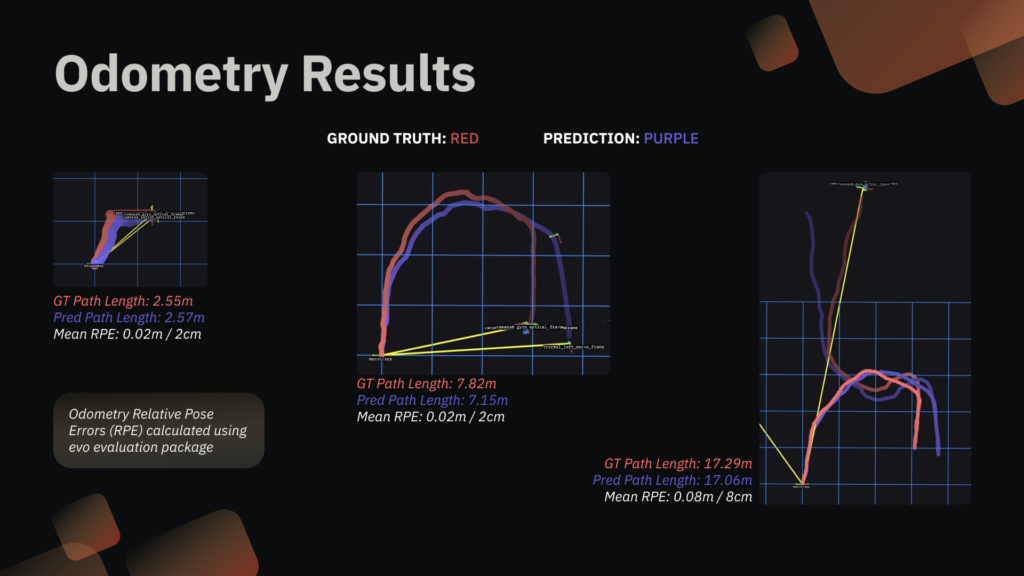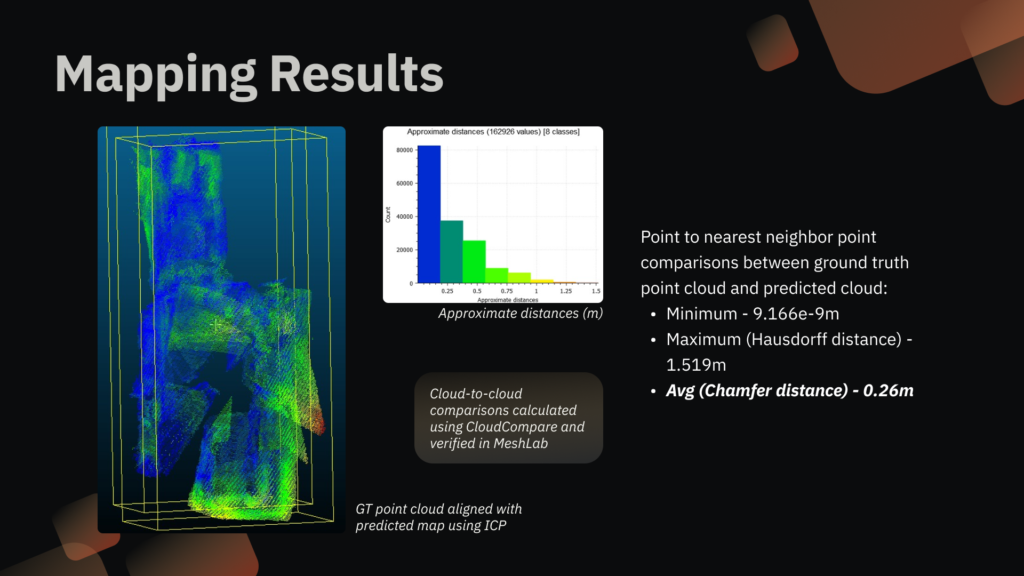Spring System Performance
For the Spring Semester, our team set a target to complete the depth estimation, odometry, and mapping subsystems and all system-level requirements associated with those subsystems. The complete list of targeted requirements is shown in the table below.
| Requirement | Status | Subsystem |
|---|---|---|
| PR.M.1 Sense the environment farther than 1m away from itself. PR.M.2 Sense the environment closer than 5m away from itself. | Passed | Depth Estimation |
| PR.M.3 Perform odometry with a Relative Path Error <2m. | Passed | Odometry |
| PR.D.3 Updates the dense-depth map visualization at minimum 0.2Hz. PR.D.4 Chamfer distance is less than 5m from ground truth point cloud. | Passed | Mapping |
| PR.M.6 Communicate with an operator with a maximum latency of 500ms. PR.M.7 Communicate with an operator within 25m. | Passed | Networking |
By the end of spring, the overall system is comprised of the Phoenix Pro drone and the Ground Control Station (GCS). Through a Local Area Network, the drone wirelessly transmits raw sensor feeds as well as the predicted depth, odometry, and global map to the GCS, where operators can view the visualized data in real time. All compute is executed onboard the drone.
We demonstrated these capabilities at SVD through the following demonstrations:
| Procedure | Success criteria | Result |
|---|---|---|
| The operator flies the drone around a building that is emitting thick smoke. The drone relays the output of the sensors to the ground control station in real-time. | Flight verification: Continuous flight for greater than 3 minutes Networking verification: Communication Latency <5s (visual verification) | Flew outside continuously around smoke for 3 min 40 secs. Latency on average for all communication was less than 500ms. |
| An indoor environment is filled with dense smoke, and the drone is navigated in the indoor environment. The drone localizes itself in the environment and recovers dense metric depth through dense smoke and darkness. The robot then transmits the sensor feeds and output of the algorithms to the ground control station. | Perception verification: Sense the environment from 1m to 5m Depth estimation verification: Dense depth updates should happen at 0.2Hz Depth estimation verification: Chamfer distance less than 20cm. Odometry verification: Relative Path Error < 2m when compared to Visual SLAM ground truth. Networking verification: Communication Latency <5s (visual verification) | Perceived through 0.5m to 20m. Dense depth updates come in at 0.2Hz. Chamfer distance less than 20cm. Relative Path Error was 2cm for easier trajectories and 8cm for the SVD complex indoors trajectory. Latency on average for all communication was less than 500ms. |

